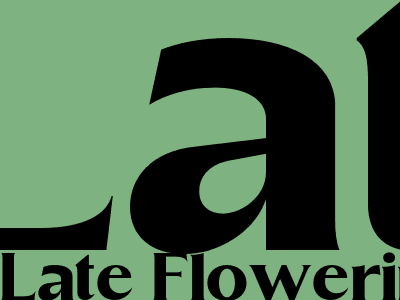
Late Flowering Perennial Crossword: Unlocking the Secrets of Autumn Bloomers
Introduction: Unveiling the Charm of Late-Blooming Beauties
As summer wanes and autumn's embrace draws near, the garden transforms into a kaleidoscope of vibrant hues. Amidst the fading foliage, a select group of perennials defies the seasonal transition, flaunting their stunning blooms well into the cooler months. These late-flowering perennials are a gardener's delight, extending the season of beauty and providing a touch of cheer during the shorter days.
Unveiling the Late Bloomers: A Closer Look
Late-flowering perennials vary greatly in size, shape, and color, offering a diverse range of options for gardeners seeking to prolong their garden's allure. Some of the most popular and reliable late bloomers include:
- Asters: With their daisy-like blooms in shades of purple, pink, and blue, asters are a classic choice for late-season color.
- Chrysanthemums: Known for their vibrant and long-lasting blooms, chrysanthemums come in a wide range of colors and forms, including pom-poms, spiders, and daisies.
- Goldenrods: Often maligned for their role in hay fever, goldenrods are nonetheless valuable late-season nectar sources for bees and butterflies.
- Heleniums: With their cheerful, daisy-like flowers in shades of yellow, orange, and red, heleniums add a burst of warmth to the fall garden.
- Sedums: Sedums, with their fleshy leaves and clusters of star-shaped flowers, provide both late-season color and winter interest.
Benefits of Late-Flowering Perennials
Incorporating late-flowering perennials into your garden offers several benefits:
- Extended Blooming Period: Late-blooming perennials keep your garden looking its best well into autumn, providing a much-needed burst of color as other plants begin to fade.
- Wildlife Value: Many late-flowering perennials are important nectar and pollen sources for bees, butterflies, and other pollinators, making them essential for supporting biodiversity.
- Autumnal Interest: Even after their blooms have faded, many late-flowering perennials retain attractive foliage or seed heads, adding interest to the garden during the colder months.
Planting and Care
To ensure the success of your late-flowering perennials, proper planting and care are essential:
- Site Selection: Most late-flowering perennials prefer full sun to partial shade and well-drained soil.
- Planting Time: Fall is generally the ideal time to plant late-flowering perennials, as they will have time to establish their roots before winter.
- Watering: Water your perennials regularly, especially during dry spells, but avoid overwatering.
- Fertilizing: Feed your perennials with a balanced fertilizer in spring and fall.
- Mulching: Mulch around your perennials to help retain moisture and suppress weeds.